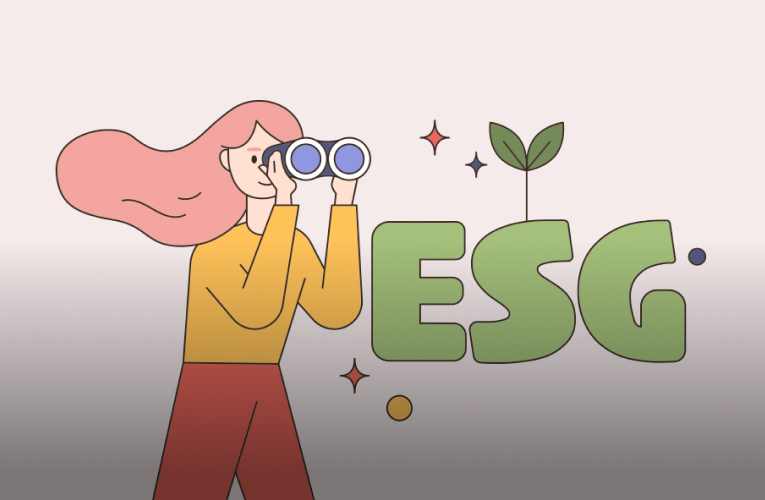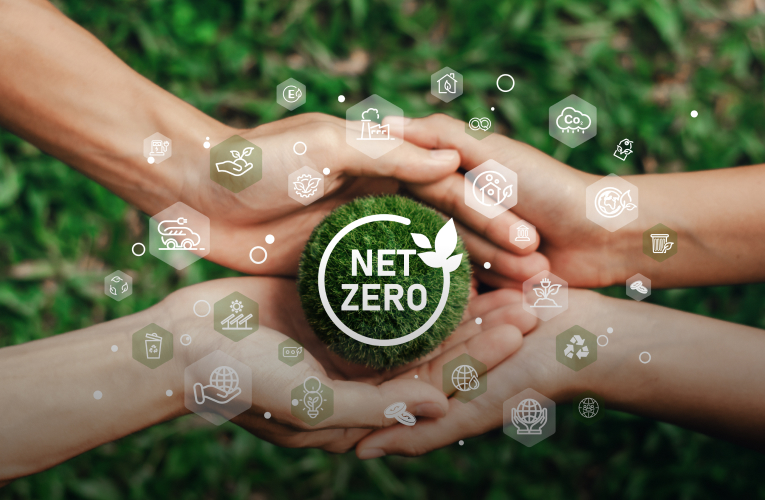
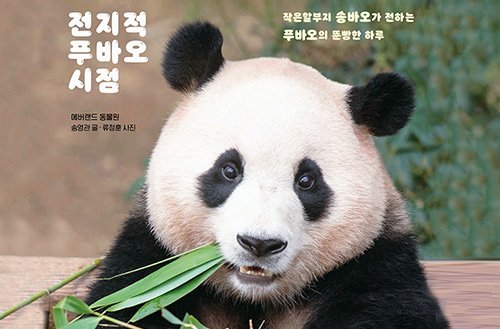
-
-
- 메일 공유
-
https://stories.amorepacific.com/en/a-narrative-made-possible-by-our-ongoing-empathy
A Narrative Made Possible by Our Ongoing Empathy
Part 5. A Narrative Made Possible by Our Ongoing Empathy

Columnist
Shinhee Lee Amorepacific CSR Team

#intro
Throughout our discussions, we've explored everything from the meaning of ESG to the ESG practices of our company and other global entities. I hope these insights have been enlightening. Today, in our final column wrapping up the ESG series, we shift from corporate examples to a tale of ‘sustainability’ in our daily lives. While ESG is originally a term for corporate investment criteria, inextricably linked to ‘sustainable management,’ its foundational principle of ‘sustainability’ applies just as profoundly to our everyday existence.
1 Reflecting on Biodiversity Before Parting with Fu Bao
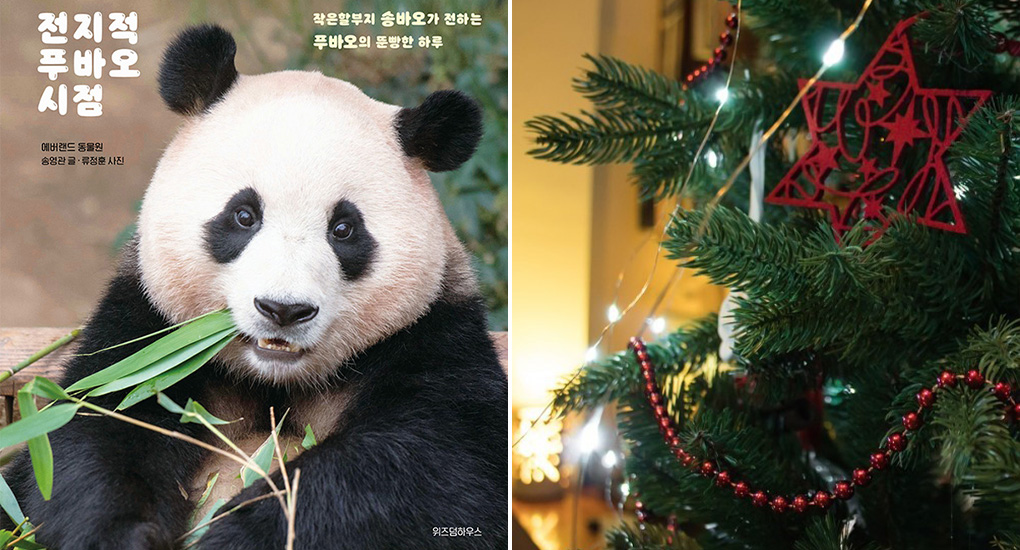
Fu Bao, Source: Kyobo Book Centre / Korean Fir, Source: Google
This year, South Korea has been gripped by ‘panda fever.’ You're likely familiar with ‘Fu Bao,’ the giant panda star of Everland. As Fu Bao prepares to return to China, the owner of the global panda population, in July of next year, it has sparked renewed interest in ‘endangered species.’
In 2003, to protect the then 1,600 remaining giant pandas, China established laws ensuring all pandas are Chinese property and are only loaned out internationally, requiring pandas born overseas to return to China after 24 months. (The giant panda has just been downgraded from ‘Endangered’ to ‘Vulnerable’(1) by the IUCN in 2016, thanks to the conservation efforts.)
The streets and shops are brimming with Christmas cheer. Did you know the Korean fir, commonly used as a Christmas tree worldwide, is native to Korea? Once prevalent in high mountains like Hallasan, Jirisan, and Deogyusan, it's also a prominent species vulnerable to climate change. The primary causes for their die-off, which has exceeded 30%, include global warming and decreased snowfall, leading to water scarcity. In 2011, the IUCN classified the Korean fir as a critically endangered species.
Another example is the horseshoe crab, a ‘living fossil’ dating back 480 million years. Horseshoe crab's(2) blood contains a unique immune system; instead of producing antibodies, it coagulates upon detecting bacteria. Scientists have used this trait to test the purity of drugs and vaccines, a significance highlighted by the COVID-19 crisis. Had horseshoe crabs been extinct before 2020, COVID-19 vaccine development might have been severely delayed.
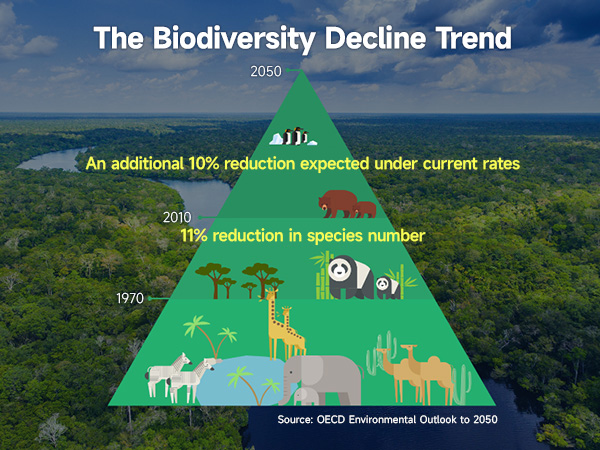
Biodiversity Trends / Source: OECD
According to the OECD, since 1970, approximately 60% of vertebrates worldwide have vanished, and over 40% of insects have become extinct. From 1980 to 2005, 20% of mangrove forests were also lost. The concept of biodiversity emerged from this alarming situation. Since many resources foundational to our civilization are derived from biological sources, biodiversity is directly linked to human survival and prosperity. Paying attention to nearby endangered species like Fu Bao and the Korean fir and to ecosystems and biodiversity may inspire more heartfelt support for corporate initiatives such as carbon neutrality, plastic reduction, and eco-friendly movements.
2 Embracing Cultural Diversity in Our Daily Lives
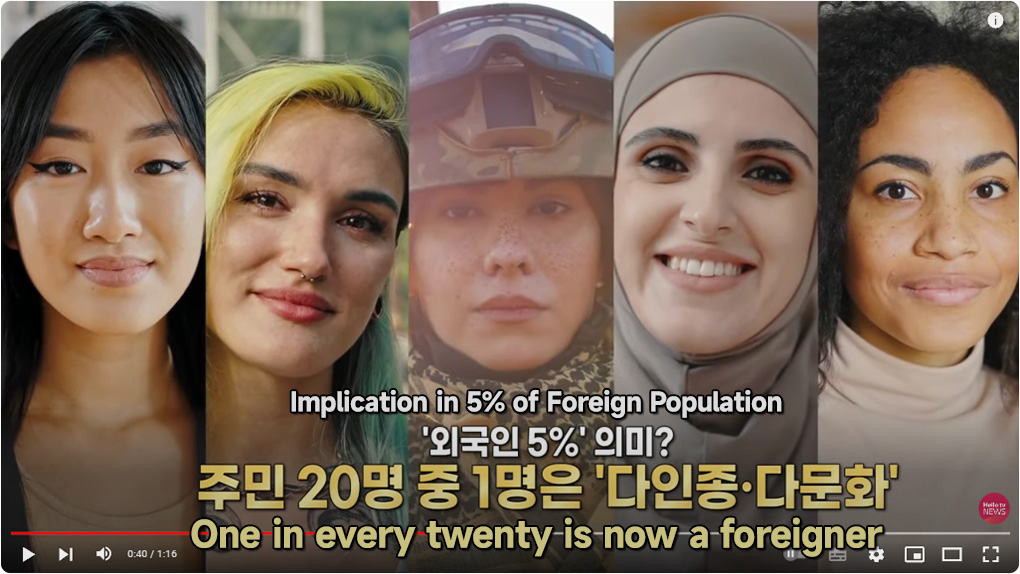
Multiethnic Nation / Source: HelloTV News
We've learned through textbooks that South Korea is a homogenous society. However, starting in 2024, South Korea will become Asia's first ‘multiethnic nation.’ The OECD classifies a country as ‘multiethnic and multicultural’ when its foreign population exceeds 5%. As of last September, foreigners living in Korea account for 4.89% of the total population, not including those unrecorded, indicating a substantial shift. Particularly in schools, the number of multicultural students has tripled over the past decade, reaching 200,000. This means that more than one in every twenty Koreans is now a foreigner, a second-generation immigrant, or a naturalized citizen.
Meanwhile, the age demographic is also undergoing a significant transformation. By the end of 2023, the population of senior citizens aged 65 and above in South Korea will reach 10 million, making up 19% of the total population. A society where over 20% of its population is aged 65 or above is classified as a ‘super-aged society.’ Thus, South Korea is expected to enter this category next year. The implications are profound: one in every twenty people will be a foreigner, and one in five will be over 65. This drives home the importance of corporate initiatives in diversity and inclusion.
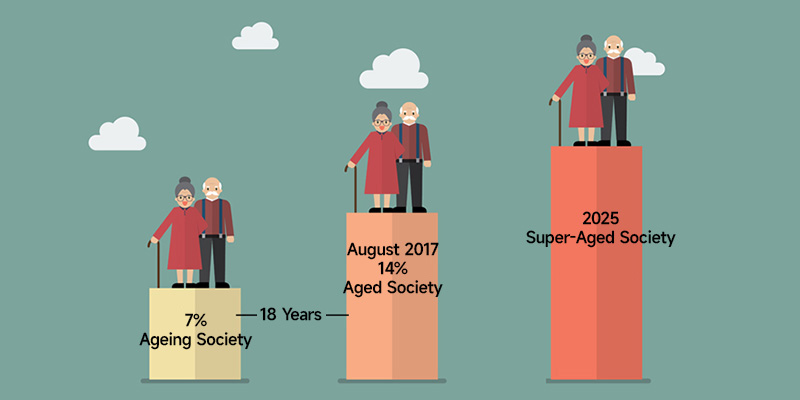
Super-Aged Society
/ Source: Mirae Asset Investment and Pension Center
We should focus not on what is right or wrong, good or bad, but on the fact that our society is ‘diverse’ and ‘changing.’ Humans are instinctively adept at recognizing differences between themselves and others. However, this recognition must lead not to discrimination or exclusion but to inclusivity and diversity. The changed demographic structure and the presence of various races are realities we will encounter from tomorrow onwards.
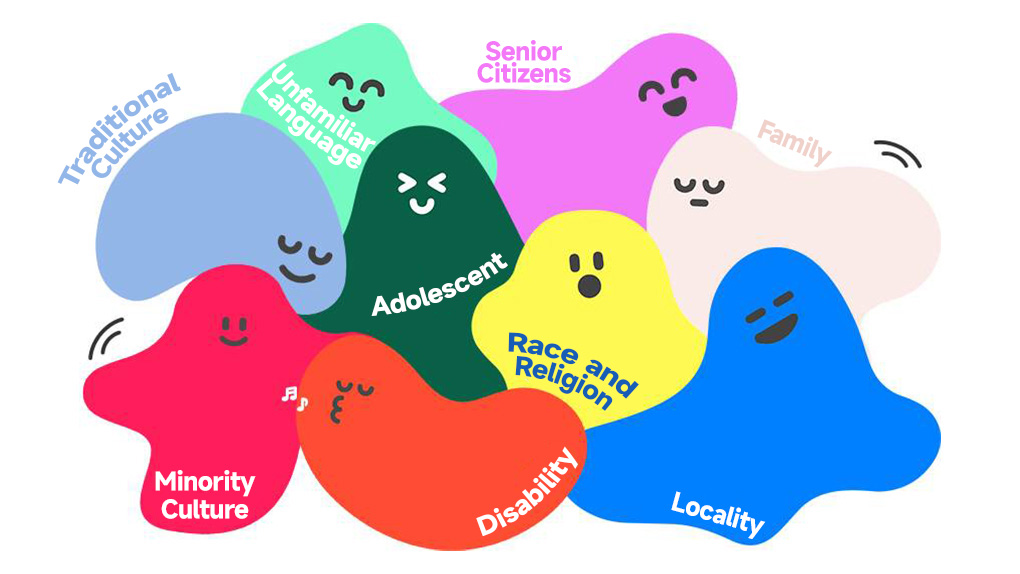
Cultural Diversity / Source: Arts Council Korea
Cultural Diversity Character ‘Dayangyi.
’ May 21 is World Day for Cultural Diversity. A week from this date in South Korea is designated annually as ‘Cultural Diversity Week,’ promoting understanding of cultural diversity among citizens through various events.
3 ESG, Made Possible Through Continuous Empathy
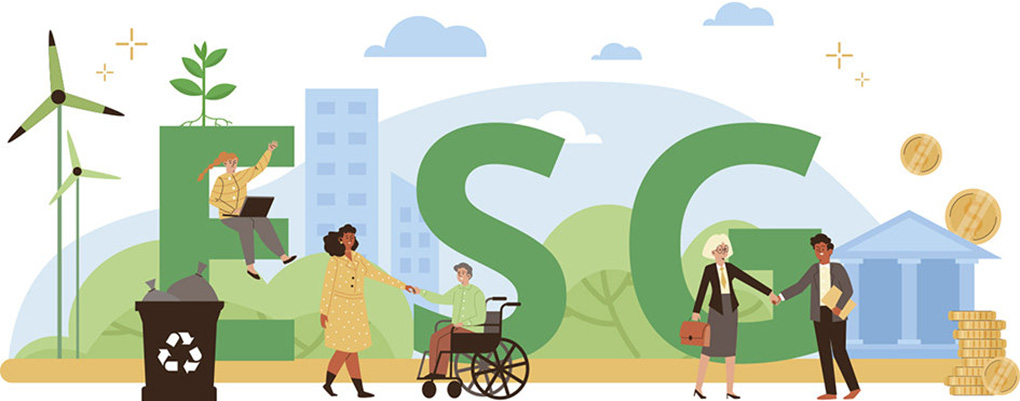
ESG / Source: Dong-A Ilbo
ESG may seem complex, overly familiar, or even a bit tiresome to some. However, viewing ESG from the sustainability perspective reveals its inseparable connection to everyday life.
The EU defines sustainable management as making decisions that sustain a company's viability and enhance the sustainability of the global environment and social communities. In other words, it's about maintaining our environment's and society's sustainability through corporate social responsibility. Our role is to observe and engage with how effectively companies fulfill this responsibility.
In Conclusion
Eight months ago, the first ESG column was titled ‘Relatable ESG’ And now, we conclude with the narrative that ESG is made possible through our ongoing empathy. I hope this series has conveyed that ESG and sustainable management are not just corporate prerogatives but require interest and empathy from us all, both inside and outside the corporate world. Thank you for reading.
1. According to the 4th China Giant Panda Survey in 2013, the population increased by 16.8% over ten years, reaching 1,964 individuals. Their habitat also expanded by 11.8% to 2.58 million hectares.
2. Hundreds of thousands of horseshoe crabs have been sacrificed for pharmaceutical testing, and in 2016, they were listed as an endangered species. There is a growing movement to replace horseshoe crab blood with a synthetic alternative known as ‘recombinant Factor C (rFC).’
-
Like
0 -
Recommend
0 -
Thumbs up
1 -
Supporting
0 -
Want follow-up article
0




